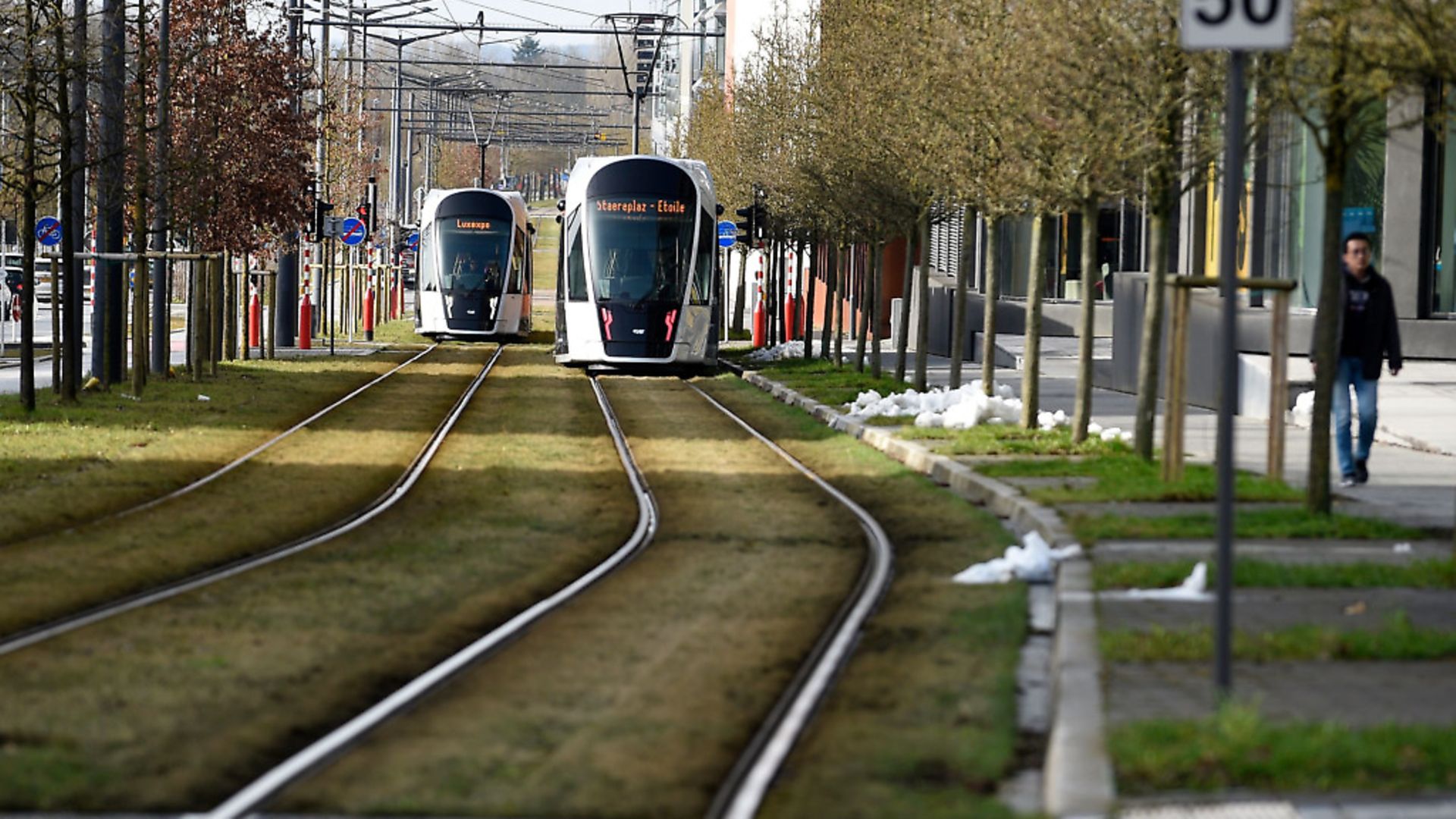
The Grand Duchy is the first country in the world to introduce such a scheme. EMMA LUCK asks whether it could be a post-Covid example to follow.
If you bought a ticket for the number six bus from the Pletzer stop in the suburb of Helfenterbruck at 11.59pm on February 28 you were probably the last person in Luxembourg to pay for your journey by public transport.
The reason for this was nothing to do with the fast-looming Covid pandemic, but, rather, a quiet revolution that occurred in this central European country the size of Oxfordshire just before the virus struck.
In a world first, fares for public transport throughout the whole nation were scrapped. Thanks to the largesse of the government and taxpayers of the Grand Duchy, all buses, trams and trains are now free of charge for citizens, expatriates and visitors alike.
In a nation with more cars in use per capita than any other country in the European Union, this free mobility drive is aiming to encourage a shift away from reliance on private vehicles.
Only one in five commuters currently use public transport so the government is looking to transform the mindset of its people and get them onto the network that they have thus far shunned.
Nationwide free transport is a key policy of the ruling coalition, which is made up of the centrist Democratic Party, the left wing Socialist Workers’ Party and the Greens. Their strategy is intended to combat pollution, support low earners and to reduce congestion especially around Luxembourg City.
Pre-lockdown, the Grand Duchy was thriving economically but had severe issues with traffic. Each driver there spent an average of 30 hours per year stuck in jams. Major roads were snarled up in the rush-hour, buses are old-fashioned and the rail system is notorious for its delays. More than half of Luxembourg’s greenhouse gas emissions come from transport.
The government had two options – use a carrot such as offering free travel to incentivise its people to get onto the trains and buses, or adopt the stick approach that London and Paris have, with a congestion charge and a flat ban of certain number plates respectively. The former approach was seen as the more effective.
The ruling coalition is optimistic about its chances of success. Luxembourg is both compact and wealthy. While many locals are comfortably unfamiliar with buses and trains, their taxes can help to solve the problem with overcrowding on the roads. Research suggests that introducing just one more train into the public transport network could take 2,000 cars off the road with the resulting benefits from cutting vehicle emissions whilst an extra 20 trains could get 40,000 cars off the road.
The project will cost an estimated 41 million euros (£35 million) in lost ticket fares and that will be shouldered by the taxpayer. However the lost fare revenue is a tiny sum compared with the 1 billion euros (£875 million) it costs to run the country’s transport system.
The government is in the middle of a major and much needed overhaul of its transport infrastructure with a new strategy intended to create a public transport network that can carry, and cope with, 20% more people by 2025.
The plan aims to cut rush-hour congestion and includes rail network modernisation, better cross-border connections and new train-tram-bus exchange hubs as well as road-related initiatives, paid for through state investment of 2.2 billion euros. This strategy also includes a ‘no-emission’ objective, with the introduction of an all-electric fleet of buses by 2030.
Before charges were scrapped it was already the cheapest public system in Europe. An all-day ticket cost four euros, less than the fare for the six-minute journey from Victoria to Clapham Junction in London. The current structure of first and second class compartments on the railways will continue. However the charge for first class will stay; it currently stands at a flat rate of three euros.
Passengers commuting from nearby towns and cities outside the country will continue to pay fares but they will be reduced in line with the proportion of the journey in Luxembourg territory.
While broadly welcomed, the move is not without its critics and has met with opposition from several quarters. Transport unions fear it could lead to an increase in vandalism and redundancies but the transport ministry has claimed that nobody will be laid off; staff are expected to be redeployed.
Each working day (pre-lockdown), the country’s population of just over 600,000 swelled by some 220,000 employees who commute from Belgium, France and Germany. These border-hopping workers account for almost half of the country’s entire workforce.
There are concerns that some may drive just across the border and leave their vehicles in small towns or villages swamping limited parking facilities while they jump on a free bus or train to reach their workplace.
Also, diesel and petrol is cheap compared with EU neighbours, which discourages motorists from switching to less convenient trains even if they are free. This also brings the so-called fuel tourists flooding across the border to fill their tanks which further adds to the congestion.
Luxembourg is not the first EU country to introduce such measures but it is the first to do so across the entire nation. Estonia’s capital, Tallinn, unveiled its free public transport in 2013 but only for residents. It has not ruled out extending the scheme to non-residents but is reluctant to pay the extra 20 million euros it would cost.
The northern French city of Dunkirk also introduced free travel for its locals in 2018 and saw a dramatic increase in bus passengers. It was such a success that it caught the eye of recently re-elected Paris mayor Anne Hidalgo. She has drawn up proposals for free public transport for all, having introduced it for the youth of Paris during her tenure. However it would work out at around 500 euros per household, which is widely seen as too expensive in the current economic climate.
French bus operators are also considering removing ‘peppercorn’ fares from some bus services. At present passengers can travel around the south of the country from cities such as Nice and Perpignan for a flat fare of just one euro.
Germany and Belgium will be watching this strategy with interest as they too have mooted the idea of free public transport for all in recent years in a bid to cut air pollution.
Replicating such a scheme across a much larger country – in terms of land mass, population and the subsidised cost – would be no small undertaking, however. The UK has free travel for older people, but there is little current political appetite to extend this further.
It has been difficult assess the impact of Luxembourg’s strategy, as the country went into lockdown only a few weeks after its introduction. But the pandemic will certainly have raised interest in it. Among the consequences of the Covid-19 lockdowns has been improved air quality and less congestion. As cities try to return to normality, they will want to hang on to those improvements, rather than simply revert to previous levels of traffic and pollution.
In Luxembourg, the use of public transport is gradually starting to creep back up after lockdown. However, it is going to take some time to see a full recovery as health and safety remain a big concern. Operators are currently working hard to convince the public that they will be safe when using buses and trains. The use of digital technology will be key in this battle to win back commuters and travellers. Real-time connected digital systems are helping operators to plan their services and people flow efficiently while keeping health and safety as the top priority. Travellers can also log in to a plethora of new apps to find out how busy services are.
Quite how much of the country’s public transport will bounce back – and how many former commuters will continue working from home – remains to be seen. Whether Luxembourg turns out to be an innovator or an outlier when it comes to tackling climate change and congestion in the post-Covid world is just as unclear.









